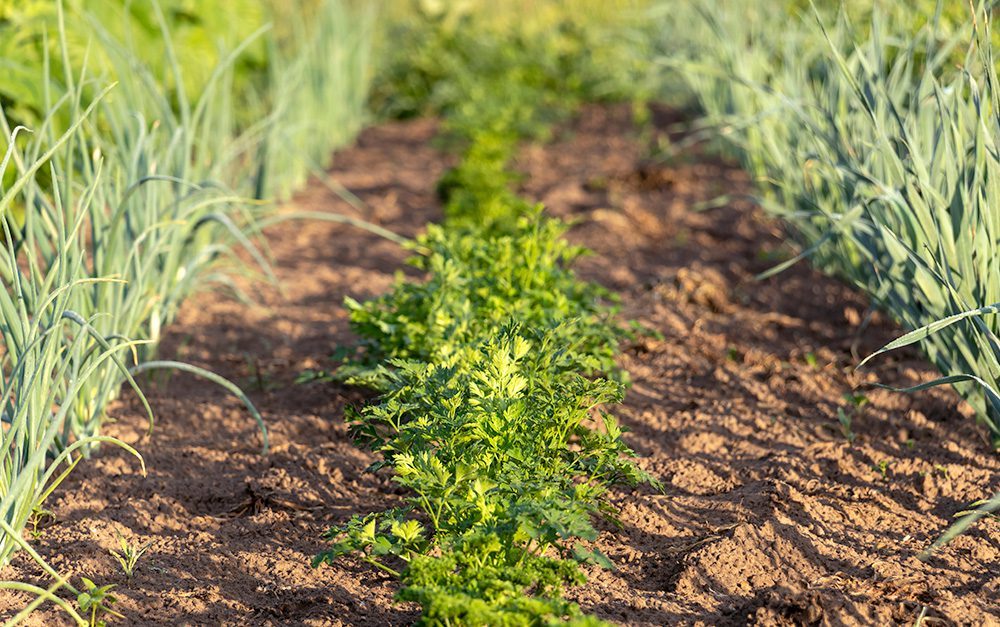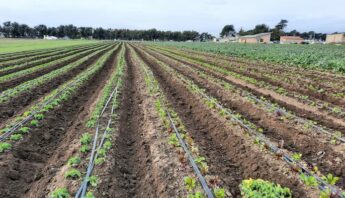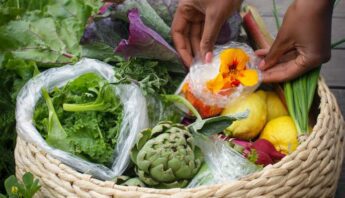After nearly two years of participation in California’s multi-stakeholder Sustainable Pest Management (SPM) Work Group, I’m excited to share that the 97-page SPM Roadmap is now out in the world. The Roadmap presents the ambitious goal of eliminating the use of “Priority Pesticides” by transitioning to sustainable pest management practices in both agricultural and urban/non-agricultural settings. The Work Group was convened in March 2021 by the Department of Pesticide Regulation, the Department of Food and Agriculture, and California Environmental Protection Agency, following its predecessor, the Chlorpyrifos Alternatives Work Group in which I also participated.
Throughout the SPM process, I was honored to have the opportunity to work closely with representatives of Indigenous and farmworker communities, public health advocates, and experts in ecological pest management and organic farming, alongside those representing conventional chemical-dependent farming. If the latter weren’t at the table and in agreement with the final consensus statement, this effort would have been dead in the water.
Because of this collaboration, we now have the opportunity to make substantial change in a system that presents myriad challenges eloquently described by organic farmer and SPM work group member Scott Park:
When we think about the pest management challenges facing ag, we have to consider:
the lack of knowledge; • the lack of a holistic model for an SPM farm;
• the lack of research into the power of healthy soil solving pest problems;
• the insecurity of farmers embarking on different cultural practices;
• the pressure from buyers for consistent quantity and quality;
• the peer pressure amongst farmers for fields to look a certain way; • the lack of markets for organic products; • the fact that many farmers are currently making a decent profit and therefore don’t have incentive to change and the ways that others benefiting from the status quo uphold policies that preserve it; • a farmers’ lack of tolerance for risk; • the fact that the use of pesticides for problem solving is deeply embedded into state, academia, and corporate thinking; • the fact that consumers, on the whole, want cosmetically perfect produce at the lowest possible price and generally have an intolerance for even slightly blemished produce; • the food safety issues that all farmers must be considering in their pest management choices; • the fact that wholesale buyers seek farmers who can grow crops at a low price, therefore making pesticides a logical alternative over hand labor; • the fact that a PCA [pest control advisor] risks losing his/her farmer client if he discourages a spray that then leads to crop loss; • the lack of water to grow cover crops and flush salts; the cost of equipment investment; • and finally, the fact that real change takes time.
What we “won”
What a list! While the Roadmap addresses all of these challenges, the elements around which myself and comrades were most vociferous included:
- A definition of SPM that is “rooted in an agroecological approach that considers the whole farm as well as the wider landscape ….”
- A shared agreement that SPM is an ecosystem-based strategy that focuses on long-term pest prevention.
- The recognition of Highly Hazardous Pesticides, as defined by the United Nations as one key set of criteria for determination of Priority Pesticides.
- The commitment by the state to use its enormous buying power to prioritize procurement of SPM-compliant produce with certified organic identified as the most readily available and enforceable means to accomplish SPM compliance.
- The explicit statement that scientific expertise includes Indigenous traditional ecological knowledge.
I was very encouraged by the early group agreement that soil health is fundamental to agroecosystem health, crop health and resilience to pest problems. There was also early consensus that substantial investment is essential in the education and training on soil health and organic production methods among all agricultural technical assistance providers.
What’s next?
While the Roadmap’s scope is comprehensive and the goals ambitious, the work to implement the plan has only just begun. Successful implementation will take years, much political will, massive investments, and dedicated and well-coordinated leadership with deep collaboration from many state agencies and the private sector.
Existing state programs such as the California Department of Food and Agriculture’s Organic Transition Program and Healthy Soils Program, would be logical places to start. One early advance would be to expand the Healthy Soils Program to include, for example, practices that establish disease-suppressive soils, and those that reduce pesticide use and associated negative impacts on soil biology and its myriad ecosystem services. The existing Pest Management Advisory Committee can be used to advance SPM research and implementation.
Prevention is Key
The best definition of Integrated Pest Management (IPM) — perhaps better termed Ecological Pest Management — is an ecosystem-based strategy that focuses on long-term prevention of pests through elimination of the conditions conducive to pests. While this interpretation of prevention was included in the Roadmap, it was de-emphasized by greater emphasis on pest detection and exclusion. As elimination of pest-conducive conditions is fundamental to successful urban pest control, so too is it fundamental to ecological pest management in agricultural settings.
We should all be familiar with the popular proverb, “an ounce of prevention is worth a pound of cure.” That approach is entirely relevant here. Why wait until the problem exists to try to eradicate it rather than avoid it in the first place? In his quote above, Mr. Park identified one core reason, “the use of pesticides for problem solving is deeply embedded into state, academia, and corporate thinking.” That will need to change; and it is changing. We should be encouraged by the continual growth of organic farming in California and around the world, and a growing consciousness among even the biggest players in the fresh produce industry that pesticide reduction is necessary to protect workers, consumers, pollinators and, as we point out in our recent climate change report, the planet.
The SPM Roadmap presents a collective vision of how we can get there. It will be a heavy lift to undo the deeply embedded and misguided dependence on pesticides, but it must be done, and together it will be done. I look forward to the next couple of years in which I hope to see tangible and substantial progress in implementing the SPM Roadmap. Its implementation will be precedent-setting as no other U.S. state has attempted such a statewide, comprehensive transformation of food and farming practice and policy.







